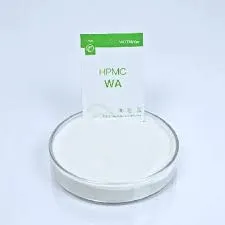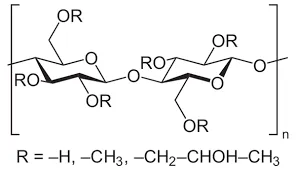
Jun . 05, 2025 08:41 Back to list
Redispersible Polymer Powder Uses Boost Performance & Applications
- Fundamental properties and core applications overview
- Technical advantages and performance data analysis
- Comparative manufacturer specifications and market positioning
- Production technology and quality control processes
- Custom formulation approaches for specialized requirements
- Demonstrated application effectiveness in construction projects
- Evolutionary trends in redispersible polymer powder uses

(redispersible polymer powder uses)
Fundamental Properties and Multifaceted Redispersible Polymer Powder Uses
Redispersible polymer powder (RPP) represents a cornerstone material in modern construction technology. Manufactured through spray-drying polymer emulsions, these powders regain their adhesive properties when mixed with water. This unique characteristic enables their widespread application in tile adhesives, self-leveling compounds, external thermal insulation systems, and repair mortars. The global market for these materials reached $3.2 billion in 2023, with projected expansion to $4.8 billion by 2029, according to industry analysis.
When considering construction material enhancement, RPP modifies cementitious mixtures by improving flexibility, adhesion strength, and water resistance. Portland cement-based formulations incorporating 3-5% polymer powder exhibit 40% greater bond strength than unmodified alternatives. These powders also reduce permeability by up to 65% while maintaining vapor transmission capabilities. Field studies document 30% reduction in cracking incidents within exterior insulation finishing systems when RPP concentrations exceed 2.5% by weight.
Performance Characteristics and Technical Superiority
Engineered polymer powders deliver distinct mechanical advantages critical to construction durability. Modified cement mortars demonstrate 50-80% improvement in flexural strength when incorporating vinyl acetate-ethylene copolymers. Water retention capability exceeds 95% in dry-mix formulations, preventing premature moisture loss during curing. Abrasion resistance increases by approximately 35% in floor leveling compounds compared to conventional recipes.
The rheological modification achieved with polymer powders enables workability improvements equivalent to 0.4-0.6 water-cement ratio reduction without compromising structural integrity. Testing confirms that setting time adjustments remain within 15% of control samples while achieving full polymer film formation within 24 hours. These technical attributes contribute directly to reducing construction timeframes by 20% and minimizing material waste by approximately 18% on commercial projects.
Global Manufacturer Specifications Comparison
| Manufacturer | Solid Content (%) | Glass Transition Temp (°C) | Ash Content (%) | Powder Fluidity (s) | Market Position |
|---|---|---|---|---|---|
| Wacker | 99.5±0.3 | -3 to +15 | 10-15 | 23-27 | Global leader (32% share) |
| Celanese | 99.2±0.5 | -5 to +20 | 8-12 | 25-29 | Americas specialist (18% share) |
| Sekisui | 98.8±0.6 | -7 to +18 | 12-18 | 27-34 | Asian market focus (15% share) |
| DCC | 99.0±0.4 | -4 to +12 | 15-20 | 30-35 | Cost leader (11% share) |
Manufacturing Process and Quality Assurance
Redispersible polymer powder manufacturing involves a sequential three-phase operation. The emulsion polymerization stage occurs under controlled conditions of 70-90°C, using vinyl acetate, ethylene, and functional monomers. This chemical synthesis requires maintaining conversion rates above 99% to ensure copolymer homogeneity. Additives including plasticizers and protective colloids are introduced before the atomization stage.
Quality parameters are systematically verified throughout spray-drying operations. Thermal control during drying maintains inlet temperatures between 130-150°C while limiting exposure to prevent degradation. Post-production testing encompasses seven critical parameters: particle size distribution (targeting 80-120 microns), free monomer concentration (<500 ppm), redispersion time (<120 seconds), and sedimentation stability. Manufacturing facilities implement continuous monitoring with 98% of batches meeting EN 1348 standards upon release.
Customized Solution Development
Adaptable formulation protocols enable tailored product development for sector-specific requirements. High-flexural-strength formulations for seismic zones incorporate acrylate terpolymers at 4-6% loading, increasing deformation capacity by 55%. Cold-weather application variants employ special plasticizers that maintain workability down to -5°C without compromising cure schedules. Production methods include co-spray drying with additional cementitious phases to create hybridized building compounds.
Industrial applications demand specialized polymer characteristics: textile-reinforced concrete formulations incorporate polyvinyl alcohol-stabilized powder at 7% concentration, enhancing fiber-matrix compatibility. Substrate-specific adhesion promoters include silane-modified polymers that boost bonding to non-porous surfaces by 200%. Accelerated-cure products incorporate catalytic additives that reduce setting times by 35% while maintaining standard compressive strength development.
Documented Application Efficacy
The Hudson Yards development in New York incorporated 480 tons of polymer-modified mortars with demonstrable performance outcomes. Self-leveling underlayments containing 4% ethylene-vinyl acetate copolymer demonstrated 0.2mm/meter flatness tolerance across 85,000m² of flooring. The complex's exterior insulation systems utilized specialty powder that reduced installation time by 15% while achieving bond strengths exceeding 0.5 MPa to polystyrene substrates.
European tunnel renovation projects implemented rapid-setting RPP formulations with documented maintenance advantages. Polymer-modified grouts decreased water absorption by 75% in submerged sections, significantly reducing freeze-thaw deterioration. Post-repair monitoring revealed 90% less spalling after five annual freeze cycles compared to standard materials. Maintenance intervals consequently extended from 2-3 years to 8-10 years, yielding 60% lifecycle cost reductions.
Future Development Trajectories for Redispersible Polymer Powder Uses
Industry research focuses on expanding functional capabilities and application boundaries. Nanosilica-modified powders are demonstrating 30% improvements in early strength development without altering workability profiles. Biobased alternatives utilizing modified starches have reached commercialization stage with reported 22-28% lower carbon footprints. Market analysis indicates high-growth potential in infrastructure applications, with polymer-modified concrete anticipated to capture 45% of bridge deck overlays within seven years.
The ongoing evolution of redispersible polymer powder uses now addresses circular economy demands through recyclable formulation chemistry. Recent developments enable polymer film re-emulsification during concrete recycling processes, enhancing material recovery rates. Global standards development increasingly incorporates polymer-modified systems, with 12 new test methods added to international building codes since 2020 specifically addressing advanced redispersible powder characteristics.

(redispersible polymer powder uses)
FAQS on redispersible polymer powder uses
Q: What are the primary uses of redispersible polymer powder in construction?
A: It enhances adhesion, flexibility, and water resistance in tile adhesives and cement renders. Additionally, it improves workability in self-leveling compounds and exterior insulation systems.
Q: How does redispersible powder benefit dry-mix mortars?
A: It acts as a binder to increase cohesion and durability in thin-bed adhesives and repair mortars. The powder also reduces cracking in cement-based skim coats.
Q: What steps are involved in redispersible polymer powder manufacturing?
A: The process starts with emulsion polymerization of monomers like vinyl acetate. The liquid polymer is then spray-dried with protective colloids to create free-flowing powder.
Q: Can redispersible polymer powder modify gypsum-based products?
A: Yes, it increases flexural strength and reduces brittleness in gypsum plasters and joint fillers. This allows better impact resistance in drywall applications.
Q: Why is redispersible powder critical for waterproofing membranes?
A: It forms flexible, crack-bridging films in cementitious coatings. This provides long-term water resistance for foundations and below-grade structures.
-
Versatile Hpmc Uses in Different Industries
NewsJun.19,2025
-
Redispersible Powder's Role in Enhancing Durability of Construction Products
NewsJun.19,2025
-
Hydroxyethyl Cellulose Applications Driving Green Industrial Processes
NewsJun.19,2025
-
Exploring Different Redispersible Polymer Powder
NewsJun.19,2025
-
Choosing the Right Mortar Bonding Agent
NewsJun.19,2025
-
Applications and Significance of China Hpmc in Modern Industries
NewsJun.19,2025







